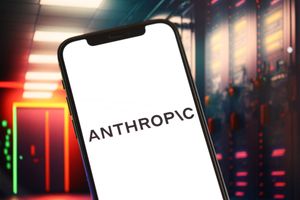
The global labor market is experiencing a significant upheaval as a relentless wave of layoffs continues to sweep across industries, leaving a trail of heightened worker anxiety and contributing to a pervasive sense of economic uncertainty. As of November 2025, job cuts have surged dramatically, making the current year a stark reminder of the fragility of employment in an increasingly volatile economic landscape. This trend, driven by a confluence of factors including economic slowdowns, persistent inflation, rising interest rates, and the rapid integration of artificial intelligence, is reshaping corporate strategies and profoundly impacting the livelihoods and morale of millions.
The immediate implications are palpable: a more competitive job market, widespread fear among the employed, and a growing prioritization of job security over career advancement. This environment not only challenges individual financial stability but also casts a long shadow over consumer spending and investor confidence, threatening to slow overall economic growth and innovation.
The Unfolding Scenario: A Deep Dive into the Layoff Epidemic
The period from late 2023 through November 2025 has been characterized by an alarming acceleration in job eliminations, with 2025 emerging as the year with the highest number of layoffs since 2020. Through October 2025, U.S. employers announced nearly 1.1 million job cuts, marking a substantial 65% increase compared to the same period in the previous year. Globally, an estimated 1.6 million U.S. workers are being laid off monthly, culminating in over 10 million employees dismissed by June 2025 across various sectors.
Several industries have borne the brunt of these reductions. The Government sector has seen an unprecedented surge, with over 307,000 job cuts through October 2025, an eightfold increase from 2024, partly due to federal workforce reductions. The Technology sector, despite its reputation for growth, continues to face significant restructuring, with over 141,000 layoffs through October 2025. Major tech giants such as Microsoft (NASDAQ: MSFT), Meta Platforms (NASDAQ: META), Amazon (NASDAQ: AMZN), Alphabet (NASDAQ: GOOGL), and Intel (NASDAQ: INTC) have all implemented substantial cuts, often citing a strategic pivot towards AI-led growth and efficiency. This sector alone saw a 27% increase in layoffs in the first half of 2025 compared to the first half of 2024.
Beyond tech, the Warehousing industry experienced one of the steepest increases, with job cuts soaring from 18,900 in 2024 to over 90,000 in 2025. Retail layoffs more than doubled, exceeding 88,000 through October 2025, while the Financial Services sector announced nearly 49,000 job cuts. The Manufacturing and Automotive industries have also seen significant reductions, with companies like Volvo (OTC: VOLVY), General Motors (NYSE: GM), Mercedes-Benz (OTC: MBGYY), and Continental AG (OTC: CTTAY) announcing mass layoffs driven by production pauses, cost-cutting, and weakened demand. In logistics, UPS (NYSE: UPS) plans to cut 20,000 jobs in 2025, following 48,000 reductions in the first nine months of the year, attributing these decisions to shifts in global trade policy.
The primary catalysts for this widespread job culling include persistent economic slowdowns, a challenging high-interest-rate environment, and sustained inflationary pressures. The rapid adoption of Artificial Intelligence (AI) and automation is also a critical factor, with AI-related layoffs surging by 136% in 2024 and continuing into 2025 as companies seek to replace human roles and prioritize efficiency. Over-hiring during the pandemic, declining investor confidence, and corporate strategies focused on restructuring have further exacerbated the situation. The U.S. unemployment rate climbed to 4.3% by August 2025, its highest since October 2021, and a staggering 1 in 3 American workers reported experiencing "layoff anxiety" in 2025, underscoring the profound human cost of these economic shifts.
Corporate Fortunes in Flux: Winners and Losers in a Leaner Market
The widespread trend of layoffs is creating a distinct divergence in corporate fortunes, with some public companies facing significant headwinds while others are strategically positioned to capitalize on the shifting economic landscape. This environment is not only influencing stock performance but also driving critical adjustments in operational strategies across various sectors.
Companies directly implementing large-scale layoffs, particularly those that over-hired during the pandemic boom, often do so to recalibrate operations and cut costs. While initial layoff announcements can sometimes trigger a short-term positive reaction from investors, who perceive these actions as prudent cost-cutting, the long-term impact can be more complex. In the Technology sector, giants like Alphabet (NASDAQ: GOOGL), Microsoft (NASDAQ: MSFT), Amazon (NASDAQ: AMZN), Salesforce (NYSE: CRM), Cisco (NASDAQ: CSCO), PayPal (NASDAQ: PYPL), Wayfair (NYSE: W), Unity Software (NYSE: U), DocuSign (NASDAQ: DOCU), Snap (NYSE: SNAP), eBay (NASDAQ: EBAY), Riot Games (a subsidiary of Tencent Holdings (HKG: 0700)), BlackBerry (NYSE: BB), and Synopsys (NASDAQ: SNPS) have all announced significant job cuts. Intel (NASDAQ: INTC) is undergoing one of its most substantial restructurings, planning to cut 24,000 jobs and halt major factory projects by the end of 2025, signaling a deep strategic shift. For these companies, the challenge lies in managing morale and retaining critical talent while pursuing efficiency. While some, like Meta Platforms (NASDAQ: META), saw a significant stock surge (nearly 50%) after its 2023 layoff announcements, sustained cuts can signal underlying business weaknesses or lead to a decline in innovation and productivity if not managed carefully.
In the Retail sector, companies like Macy's (NYSE: M), which is cutting 2,350 jobs and closing stores, along with Levi Strauss & Co (NYSE: LEVI), Estee Lauder (NYSE: EL), Hershey's (NYSE: HSY), and Walmart (NYSE: WMT), are streamlining operations in response to evolving consumer habits and economic pressures. The Financial Services industry is also seeing significant reductions, with Citigroup (NYSE: C) planning to cut 20,000 jobs over two years, Morgan Stanley (NYSE: MS) reducing hundreds in its wealth management unit, Nasdaq (NASDAQ: NDAQ) planning cuts post-fintech integration, and BlackRock (NYSE: BLK) reducing its workforce by about 3%. These moves are often aimed at maintaining profitability amidst economic uncertainties and rising interest rates. In Manufacturing and Logistics, UPS (NYSE: UPS) announced 12,000 layoffs, and American Airlines (NASDAQ: AAL) cut customer support roles. Even consumer goods giants like Procter & Gamble (NYSE: PG) and Nestle (OTC: NSRGY) are planning significant non-manufacturing job eliminations, emphasizing operational efficiency through automation.
Conversely, certain public companies are poised to benefit from this environment. Corporate restructuring and advisory services firms stand to gain from increased demand as businesses seek expertise in optimizing operations, managing debt, and adapting to market shifts. While specific public companies in this niche weren't prominently highlighted as "winners" in recent research, the category itself benefits. Similarly, Talent acquisition, HR technology, and staffing services could see increased activity. With a larger pool of available talent, platforms like LinkedIn (owned by Microsoft (NASDAQ: MSFT)) and major staffing agencies may experience higher engagement as individuals seek new employment and companies look to quickly fill specialized roles.
Perhaps the most significant beneficiaries are AI and automation providers. As companies across all sectors cut jobs to free up funds for strategic AI investments, the demand for AI solutions, chips, and servers is skyrocketing. Companies like Nvidia (NASDAQ: NVDA) have seen exceptional performance, fueling a "jobless boom" where corporate profits rise due to AI-boosted productivity even as the labor market weakens. Companies like IBM (NYSE: IBM), while undergoing some layoffs, are strategically pivoting to hire more for AI-centered roles, showcasing a clear direction of future investment. Lastly, Discount retailers and value-oriented consumer staples companies may also experience resilient demand as consumers, facing economic uncertainty, shift towards more budget-friendly options.
Wider Implications: A Shifting Economic and Social Fabric
The current wave of layoffs, extending into late 2025, represents more than just individual company adjustments; it signifies a profound recalibration of the economic and social fabric, driven by a complex interplay of post-pandemic corrections, technological advancements, and evolving global conditions. These trends have far-reaching ripple effects, influencing industry dynamics, prompting regulatory scrutiny, and drawing comparisons to historical economic shifts.
At a broader industry level, the layoffs are a symptom of a significant transition. The Technology sector, for instance, is not merely correcting for pandemic over-hiring but is fundamentally reorienting towards artificial intelligence (AI) and automation. Companies are strategically shedding roles deemed less critical or automatable to free up capital and talent for AI development and implementation. This strategic pivot is creating a leaner, more technologically advanced, but also potentially less human-intensive, workforce. The Government sector's substantial reductions, particularly under certain administrations, highlight how de-staffing can become a tool for deregulation, potentially leading to a loss of institutional knowledge and creating uncertainty for regulated industries. The retail sector's surge in layoffs underscores the ongoing pressures from shifting consumer habits and the looming threat of economic slowdowns and tariffs. A notable trend emerging in 2025 is the prevalence of "rolling layoffs" – smaller, more frequent job cuts designed to minimize immediate disruption but which contribute to sustained worker anxiety. This signals a shift from a "no-hire, no-fire" market to a "no hire, more fire" reality, shaped by high interest rates, persistent inflation, and geopolitical tensions.
The ripple effects of these widespread job cuts are extensive. Economically, mass layoffs can significantly dampen overall growth by reducing consumer spending, which in turn impacts a broad range of businesses, from local services to large retail chains. The U.S. labor market is showing clear signs of strain, with rising unemployment claims indicating that displaced workers are taking longer to secure new positions, intensifying competition for available roles. The commercial real estate sector, particularly in major tech hubs, faces challenges from underutilized office spaces as companies downsize or embrace remote work more permanently. Moreover, layoffs can have a significant multiplier effect; for instance, each federal layoff can lead to additional job losses in the private sector, affecting contractors and local businesses. While some optimists suggest layoffs might foster stricter due diligence for funding and more resilient companies, historical research indicates that startups formed under such pressured conditions are often less innovation-driven, prioritizing survival over breakthrough ideas. The aggressive adoption of AI, spearheaded by companies like Microsoft (NASDAQ: MSFT), is reshaping competitive landscapes, intensifying rivalry among tech giants and creating new opportunities for AI-focused partners, but also raising questions about the long-term sustainability of traditional partner incentives.
From a regulatory and policy standpoint, the increase in layoffs brings the Worker Adjustment and Retraining Notification (WARN) Act into sharper focus. Companies conducting mass layoffs are legally required to provide at least 60 days' notice, with many states having their own, often more stringent, WARN laws. Non-compliance can lead to substantial legal liabilities, including back pay and penalties. Furthermore, poorly executed layoffs, particularly if they disproportionately affect protected groups, can trigger class-action lawsuits, emphasizing the need for clear criteria and careful execution. The use of federal job cuts as a means of deregulation, while quicker, can lead to a loss of institutional knowledge and decreased confidence in regulatory bodies. On the monetary policy front, a weakening labor market, evidenced by rising unemployment and persistent layoff activity, could strengthen the case for central banks, like the Federal Reserve, to consider interest rate cuts to stimulate the economy, even as inflationary pressures persist.
Historically, the current layoff trends draw comparisons to several past economic events. While the volume of layoffs through Q3 2025 is the highest since the peak of the COVID-19 pandemic in 2020, the underlying causes and recovery dynamics differ. The situation is not yet as severe as the Great Recession of 2008-2009, which was primarily driven by a housing market collapse and financial crisis. Instead, the current trends are more influenced by technological shifts and post-pandemic recalibrations. Perhaps a more pertinent comparison is the "normalization of layoffs" that began in the late 1970s. What was once a rare and brutal event has become a more common strategic business tool, even for profitable companies, often aimed at boosting profit margins and appeasing investors. This cultural shift creates a "herd mentality" in the market, where companies are incentivized to follow suit. This ongoing evolution highlights a fundamental change in the relationship between employers and employees, with job security becoming an increasingly elusive concept in the modern economy.
What Comes Next: Navigating a Transformed Labor Landscape
Looking ahead from November 2025, the landscape of layoffs is expected to continue evolving, shaped by persistent economic uncertainties, the accelerating integration of artificial intelligence, and fundamental shifts in corporate operational models. Both the short-term and long-term outlooks present a mix of challenges and opportunities for companies, the workforce, and the broader economy.
In the short term (November 2025 - 2026), the job market is likely to remain in a "low-hire, low-fire" environment, characterized by cautious hiring and ongoing, albeit perhaps smaller, job cuts. U.S. employers are projected to exceed 1 million job cuts by the end of 2025, marking the highest level since 2020. The rise of "rolling layoffs"—smaller, continuous workforce reductions replacing large, one-time events—will contribute to sustained job insecurity and anxiety. Economic uncertainty remains a primary driver for these decisions, with tariffs and trade policy concerns also playing a significant role. The tech sector, despite some anticipated slowdown in layoffs by mid-2025, may see cuts extend into early 2026 as companies continue to recalibrate. For new graduates entering the workforce, the Class of 2026 faces a bleak hiring outlook, with employers prioritizing experienced candidates amidst heightened competition from recently laid-off workers.
The long term (2026-2030 and beyond) will be fundamentally reshaped by AI. While some predict a modest and temporary rise in unemployment during the AI transition, others, like the World Economic Forum, project AI could replace approximately 85 million jobs by 2026. However, this transformation isn't solely about job elimination; it's also about the creation of new roles centered on AI oversight, data ethics, prompt engineering, and human-AI collaboration. An estimated 170 million new roles may emerge globally by 2030, though a substantial portion will demand advanced qualifications, highlighting a significant skills gap challenge. The "scarring effects" of mass layoffs are a long-term concern, as workers displaced during downturns can experience a nearly 20% decline in lifetime earnings, with these effects persisting for decades. Moreover, widespread layoffs can depress wages for both employed and unemployed individuals by saturating the labor market and reducing workers' bargaining power.
To navigate these shifts, companies are compelled to make several strategic pivots. Proactive workforce planning is becoming critical, involving scenario planning, skills mapping, and designing flexible workforces that blend full-time, part-time, temporary, and gig workers. A key pivot is investment in upskilling and reskilling existing employees, equipping them with AI-related skills and "human skills" like adaptability and critical thinking that complement AI tools. Strategic AI integration is essential, with organizations adopting hybrid models where human oversight complements automated systems. When layoffs are unavoidable, compassionate layoff management—including generous separation packages, career coaching, and networking support—is gaining importance for maintaining brand reputation and supporting former employees. Rebuilding trust and culture among remaining employees through transparent communication and acknowledging the emotional toll is also paramount.
These trends present both market opportunities and challenges. Opportunities include the emergence of new job categories in ethical AI, data governance, and quantum computing, along with continued growth in sectors like healthcare, advanced manufacturing, and cybersecurity. The gig economy may also expand as AI breaks down jobs into discrete tasks. Challenges, however, are significant: persistent skill gaps, increased job competition, widespread worker dissatisfaction and distrust, and the vulnerability of high-salary employees, those lacking AI skills, and recent hires. Global economic headwinds, including ongoing uncertainty, geopolitical factors, and inflation, will likely continue to constrain hiring.
Ultimately, the future trajectory could lead to several potential scenarios. We might see a stagnant labor market with an uneven recovery, where unemployment gradually rises, and many individuals face longer job searches or accept roles with lower pay. Alternatively, an AI-driven productivity boom could lead to significant economic growth, but potentially accompanied by considerable short-term job losses in routine roles, widening wealth inequality, and social instability if benefits aren't broadly distributed. An optimistic scenario involves a transformed workforce with enhanced skills, where aggressive upskilling initiatives successfully bridge the skills gap, leading to new roles compensating for displaced ones and an elevation of human capabilities. Finally, the "scarring effects" of layoffs and potential social unrest may necessitate increased government and corporate responsibility through expanded unemployment benefits, job subsidies, retraining programs, and greater investment in employee support and career transition services. The period from November 2025 onwards will demand adaptability, continuous learning, and specialized skills in human-AI collaboration for both individual workers and organizational success.
Conclusion: Navigating the New Normal of Workforce Restructuring
The pervasive wave of layoffs sweeping across global industries through November 2025 marks a definitive shift in the economic and labor landscape. This era is characterized by a complex interplay of post-pandemic recalibration, persistent economic uncertainties, and the transformative power of artificial intelligence. The immediate and lasting impacts are reshaping corporate strategies, influencing market dynamics, and profoundly affecting the lives of millions of workers.
Key Takeaways:
- Widespread and Persistent: Layoffs are not isolated incidents but a systemic trend across diverse sectors, including tech, government, retail, financial services, and manufacturing, making 2025 a year of significant workforce reduction.
- AI as a Catalyst: Artificial intelligence and automation are increasingly central drivers, leading to job cuts in traditional roles while simultaneously creating demand for new, specialized skills in AI development and oversight.
- Economic Uncertainty Reigns: High interest rates, inflation, and global geopolitical tensions are compelling companies to prioritize cost-cutting and efficiency, contributing to a "low-hire, low-fire" environment.
- Worker Anxiety and Skill Gaps: The ongoing job insecurity is fueling widespread anxiety among the workforce, while a significant skill gap is emerging between the demands of new AI-driven roles and the capabilities of the existing labor pool.
- Strategic Corporate Pivots: Companies are being forced to engage in proactive workforce planning, invest heavily in upskilling/reskilling, and strategically integrate AI into their operations to remain competitive.
Assessment of the Market Moving Forward:
The market moving forward will likely be defined by continued volatility and a strategic reorientation. The "jobless boom," where corporate profits rise due to AI-boosted productivity even as the labor market weakens, will likely persist. This creates a bifurcated market: companies that successfully leverage AI for efficiency and growth may thrive, while those unable to adapt or manage the human impact of restructuring may struggle. Consumer spending will remain sensitive to unemployment rates and economic confidence, potentially leading to continued caution in the retail and consumer goods sectors. The commercial real estate market will face ongoing challenges from reduced office demand. Central banks, like the Federal Reserve, will be closely watching labor market indicators, and a sustained weakening could strengthen the case for interest rate adjustments.
Significance and Lasting Impact:
The lasting impact of these layoff trends extends beyond economic metrics. It represents a fundamental redefinition of the employer-employee relationship, where job security is increasingly viewed as a fluid concept rather than a given. The normalization of layoffs as a strategic business tool, even for profitable companies, is likely to continue, potentially eroding employee loyalty and increasing the demand for adaptable, multi-skilled workers. Socially, the "scarring effects" of job loss—including reduced lifetime earnings and psychological distress—will have long-term consequences for individuals and communities. The rapid integration of AI will fundamentally transform the nature of work, requiring continuous learning and a greater emphasis on uniquely human skills such such as creativity, critical thinking, and emotional intelligence. This period could either lead to a more productive, albeit highly specialized, workforce or exacerbate wealth inequality and social instability if not managed with proactive policy and corporate responsibility.
What Investors Should Watch For in Coming Months:
Investors should closely monitor several key indicators and trends:
- AI Adoption and ROI: Observe which companies are successfully integrating AI to drive tangible productivity gains and how this translates to their bottom line. Look for firms investing in AI R&D and those providing AI solutions.
- Labor Market Data: Keep an eye on unemployment rates, continuing jobless claims, and wage growth. A sustained rise in unemployment could signal deeper economic weakness and prompt central bank action.
- Corporate Earnings and Guidance: Pay attention to company earnings reports, particularly forward-looking guidance on headcount, capital expenditures, and AI investment plans.
- Consumer Spending Trends: Track retail sales, consumer confidence indices, and discretionary spending patterns, as these will reflect the broader economic health and impact on companies.
- Government Policy and Regulation: Monitor any potential regulatory responses to widespread layoffs, such as changes to WARN Act requirements or new initiatives for workforce retraining and support.
- Company Culture and Morale: While harder to quantify, signs of strong company culture, transparent communication, and investments in employee development (even amidst restructuring) could indicate long-term resilience and talent retention.
In conclusion, the current layoff trends are not merely a temporary blip but a significant inflection point, signaling a new normal in how businesses operate and how individuals navigate their careers. The coming months will be crucial in determining the precise contours of this transformed landscape, making vigilance and adaptability paramount for both market participants and the workforce alike.
This content is intended for informational purposes only and is not financial advice





